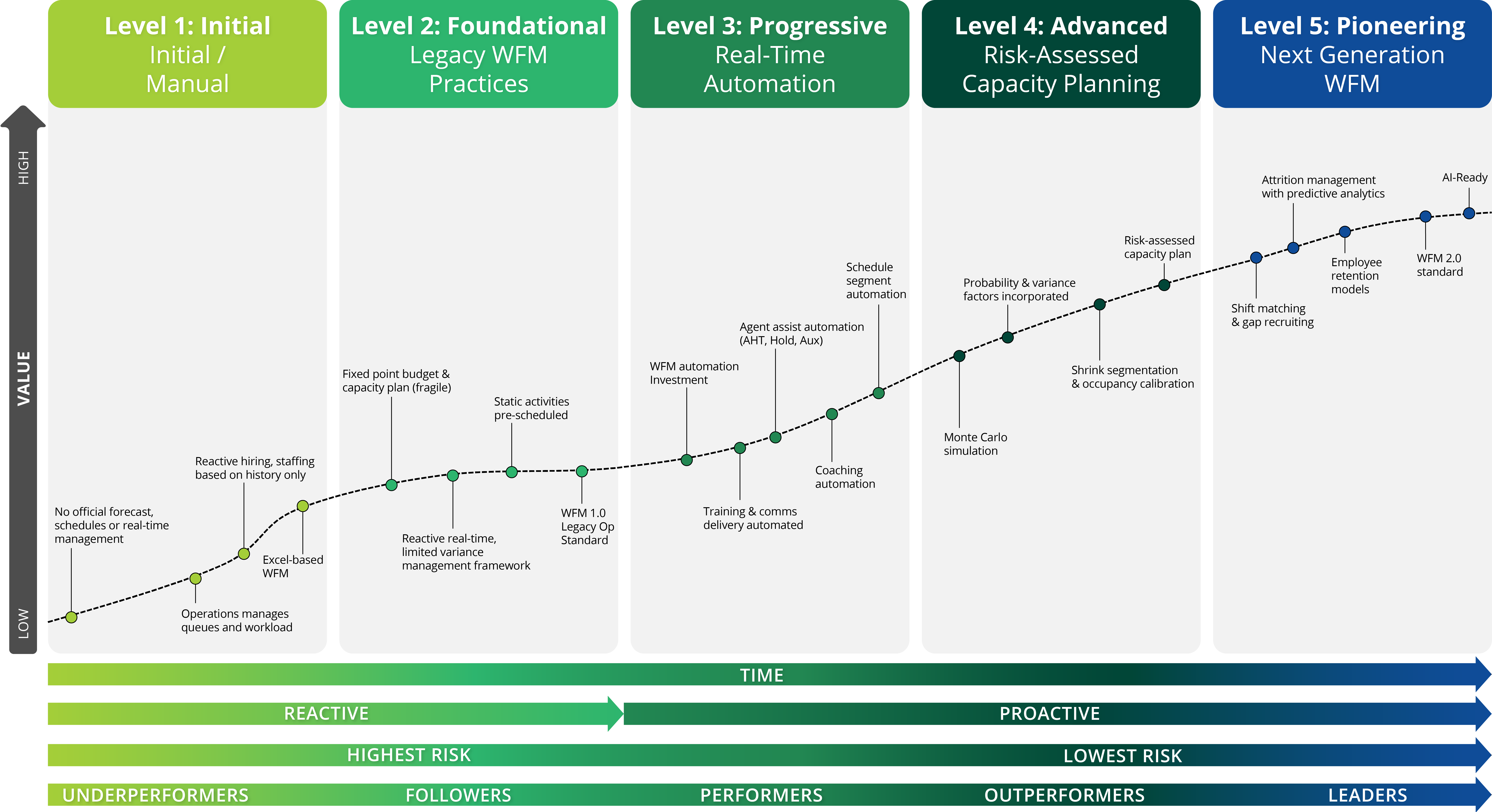
Is Your Workforce Management Strategy Keeping Up?
How to Use the WFM Maturity Model to Identify and Fix Gaps in Your Contact Center Operations
In today’s contact centers, maintaining optimal performance and employee satisfaction is tougher than ever. The pressures to balance service levels, operational efficiency, and employee engagement are constant, but what if your workforce management (WFM) strategy is holding you back?
Many contact centers are stuck in reactive processes, dealing with constant intraday firefighting, and relying on outdated systems. If this sounds familiar, it might be time to ask: Where does your organization fall on the Workforce Management Maturity Model?
Understanding the WFM Maturity Model
The WFM Maturity Model, recently updated to reflect the evolving needs of the modern contact center, provides a framework to assess your current workforce management strategy. This model identifies five key levels, each representing a step toward more resilient, employee-centric operations:

- Level 1 – Initial / Manual: At this stage, workforce management is largely reactive. Contact centers are often scrambling to meet service levels and lack the tools or processes to create accurate forecasts and schedules.
- Level 2 – Foundational (Legacy WFM Practices): Contact centers at this level have invested in traditional WFM software, but plans are fragile. Variances like call spikes or agent absenteeism cause disruptions, and the team spends most of its time reacting instead of optimizing.
- Level 3 – Progressive: Here, organizations begin introducing intraday automation to adjust in real time. This is where companies can start balancing service level objectives with operational efficiency, dynamically adapting to demand.
- Level 4 – Advanced: Advanced organizations use sophisticated capacity planning methods, like Monte Carlo simulations, incorporating risk and variance to build more resilient staffing plans.
- Level 5 – Pioneering: The pinnacle of WFM maturity—where automation, resilient planning, and employee-first policies come together. Contact centers at this level have transformed operations to prioritize employee satisfaction while optimizing performance.
Where does your organization stand?
How Intradiem Can Help
At Intradiem, we understand the complexities of modern contact center operations. Our real-time workforce automation platform is built to tackle the very challenges that hold back organizations stuck in legacy WFM processes. We help you:
Why It’s Time to Reassess
The contact center industry is evolving. If you’re still relying on manual or legacy systems, you’re not just losing out on efficiency—you’re risking higher costs, lower employee satisfaction, and increased customer churn. By leveraging automation, you can optimize staffing, reduce operational costs, and improve both customer and employee experiences.
The WFM Maturity Model isn’t just a theoretical framework; it’s a practical tool that can help guide your organization toward more resilient, agile, and employee-friendly operations.
Let us help you find where your organization stands and how Intradiem can get you to the next level.
Ready to move up the curve?
Contact us to explore how Intradiem can transform your workforce management strategy.
Contact us to learn more.
Learn how contact center automation solutions can improve your teams’ performance.
Fill out the form and we’ll be in touch.

